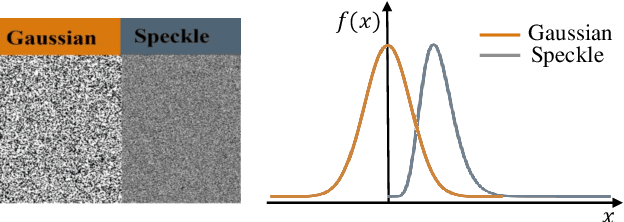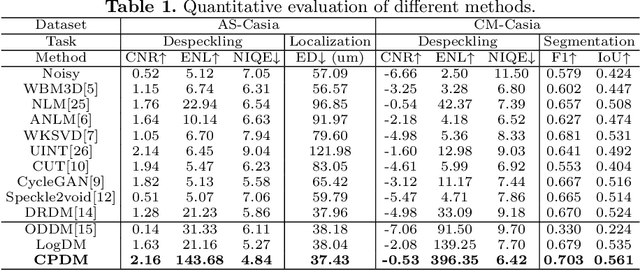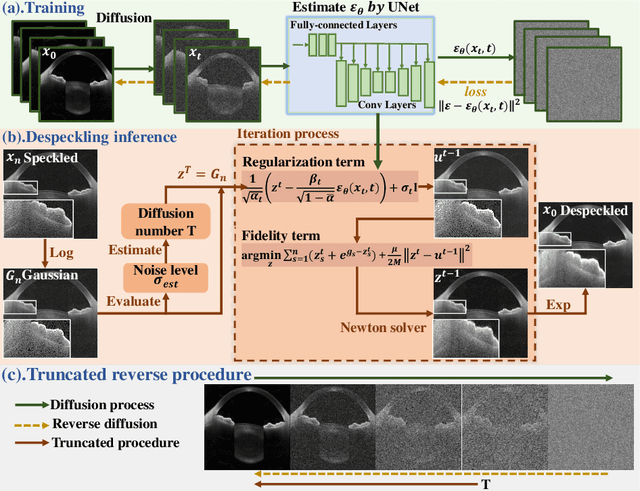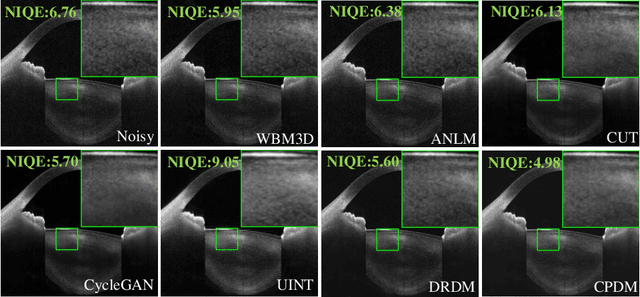Content-Preserving Diffusion Model for Unsupervised AS-OCT image Despeckling
Paper and Code
Jun 30, 2023



Anterior segment optical coherence tomography (AS-OCT) is a non-invasive imaging technique that is highly valuable for ophthalmic diagnosis. However, speckles in AS-OCT images can often degrade the image quality and affect clinical analysis. As a result, removing speckles in AS-OCT images can greatly benefit automatic ophthalmology analysis. Unfortunately, challenges still exist in deploying effective AS-OCT image denoising algorithms, including collecting sufficient paired training data and the requirement to preserve consistent content in medical images. To address these practical issues, we propose an unsupervised AS-OCT despeckling algorithm via Content Preserving Diffusion Model (CPDM) with statistical knowledge. At the training stage, a Markov chain transforms clean images to white Gaussian noise by repeatedly adding random noise and removes the predicted noise in a reverse procedure. At the inference stage, we first analyze the statistical distribution of speckles and convert it into a Gaussian distribution, aiming to match the fast truncated reverse diffusion process. We then explore the posterior distribution of observed images as a fidelity term to ensure content consistency in the iterative procedure. Our experimental results show that CPDM significantly improves image quality compared to competitive methods. Furthermore, we validate the benefits of CPDM for subsequent clinical analysis, including ciliary muscle (CM) segmentation and scleral spur (SS) localization.
 Add to Chrome
Add to Chrome Add to Firefox
Add to Firefox Add to Edge
Add to Edge